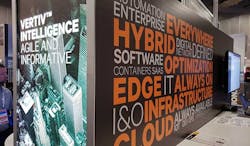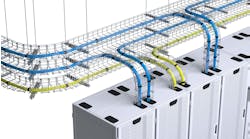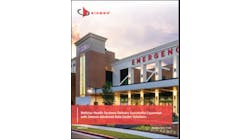Improving Data Center Performance and Efficiency on a Budget
In this Voices of the Industry column, Jack Pouchet, vice president, market development at Vertiv shares how to improve data center performance and efficiency on a budget.
Jack Pouchet, vice president, market development, Vertiv
This is an exciting time for IT and data centers. Technology is constantly evolving, driving better data delivery, more visibility and control, and improved efficiency for compute and infrastructure.
Unfortunately, data center budgets don’t expand at the same rate that technology leaders introduce new generations of equipment. Many businesses will have to make difficult decisions about where to invest available funds to optimize their operations – update servers and compute, replace or optimize infrastructure?
If you are trying to improve data center operating performance without replacing your existing infrastructure, consider these economical tactics.
- Concerned about rack space? Check for zombie servers that are taking up space and consuming energy. A study by Stanford University estimated one in three servers in North America is getting little or no use. Pull the plug and save dollars and space.
- If your large UPS systems are 10 years old or less, replacing input and output filter capacitors with premium capacitors can extend UPS service life and improve safety. These new capacitors operate at lower temperatures, improving the environment for adjacent components, and are oil-free, for safer operation and service. On average, these new capacitors have a service life that is twice as long as traditional electrolytic capacitors.
[clickToTweet tweet=”Concerned about rack space? Check for zombie servers that are taking up space and consuming energy.” quote=”Concerned about rack space? Check for zombie servers that are taking up space and consuming energy.”]
- Adding real-time UPS battery monitoring gives visibility into cell health, providing the information to replace batteries when needed, versus premature replacement according to a schedule, or waiting for a battery to fail before being replaced. Centralized monitoring systems may be field-installed to accommodate existing batteries. Your on-going service costs will go down while improving your overall reliability.
- Uninterruptible power supply system (UPS) preventive maintenance visits can improve the availability of your system. Vertiv estimates that mean time between failures (MTBF) of UPS units that received two preventive maintenance visits a year is 23 times better than a unit having no preventive maintenance.
- Your cooling system will also benefit from regular maintenance, to ensure that filters, blowers, condensers, pumps, humidifiers and refrigerant lines are working properly and without leaks or damage.
- Upgrade your existing computer room air conditioning systems with variable speed compressors, variable speed motors and intelligent controls. Variable speed components, paired with intelligence, allow your cooling system to adapt to changing loads and environmental conditions, balance the runtime of multiple cooling units, and remotely alert data center personnel of problems. If you are still using older, standard components, this upgrade could provide your data center up to 30% in energy savings over older, traditional cooling systems. These upgrades may qualify for State and Utility incentives bringing the ROI down to less than two years.
- Edge, micro-data centers, and network closets are becoming more common, and more critical. Gain visibility and improve resource utilization with remote monitoring and control of off-premise equipment. Monitoring of cabinet power distribution and UPS systems provides insight into distant operations, and remote shutdown and reset features can get your operations back online quickly.
Choosing to follow these strategies can help to keep your existing infrastructure productive and efficient, and on track with industry best practices, while also improving data center performance.
Jack Pouchet is vice president, market development at Vertiv.





